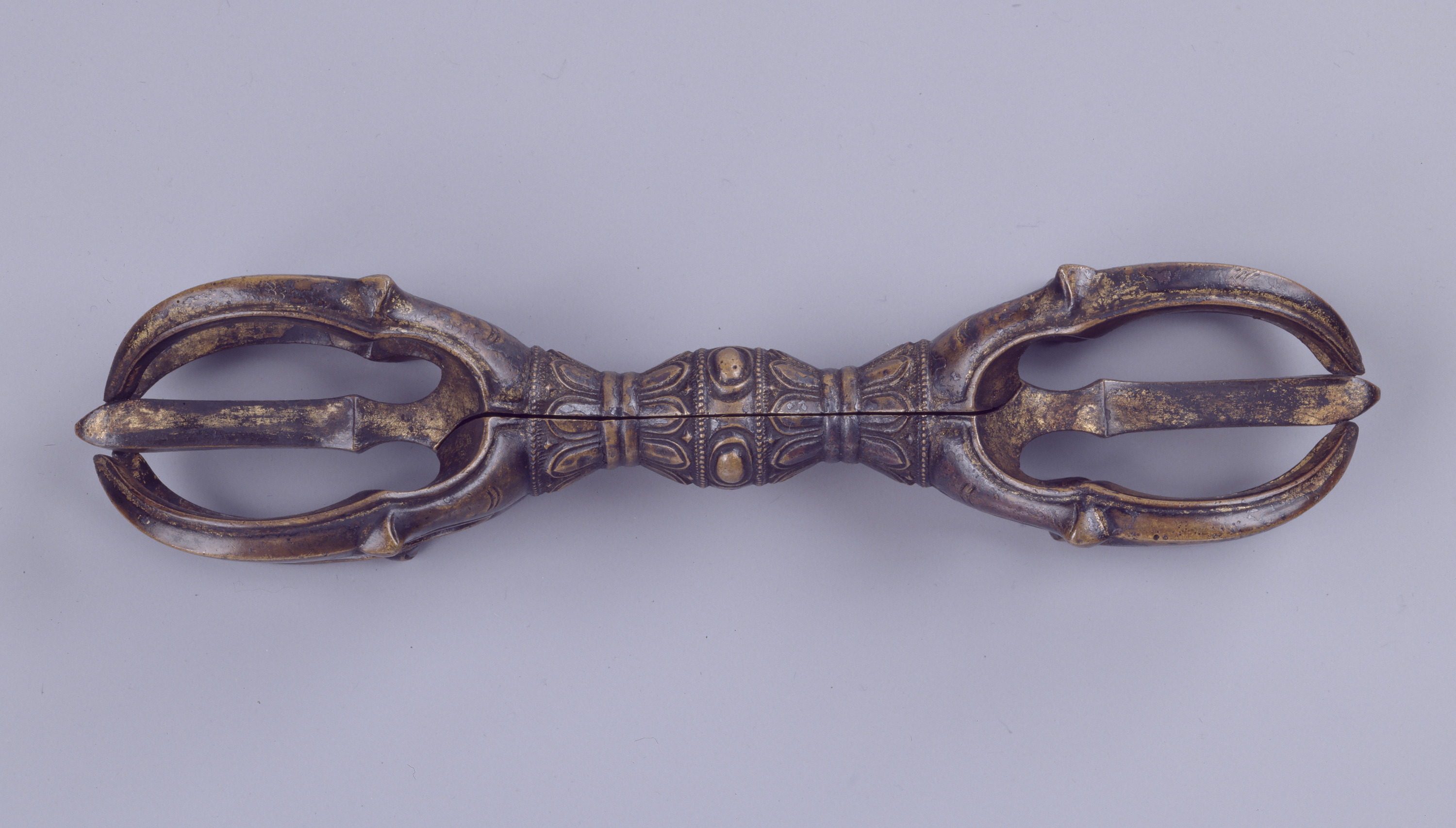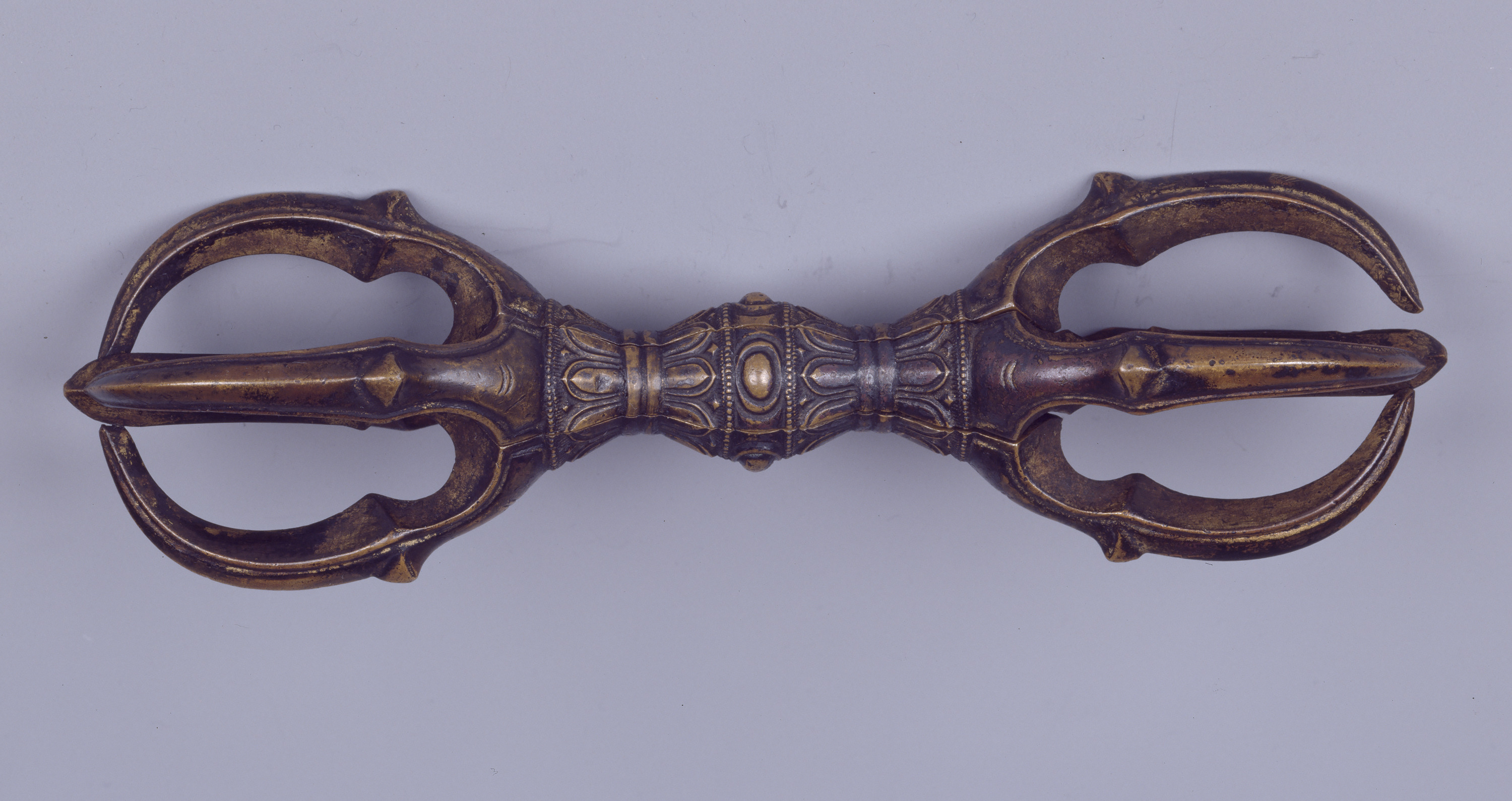- TOP
- Five-pronged Vajra
Overview
Five-pronged Vajra
- Museum No.
- EK253
Showing 1-6 of 3
| Title | Five-pronged Vajra |
|---|---|
| Designation | |
| Artist | |
| Category | Metalwork(E), Buddhist Implements |
| Country | Japan |
| Period | Kamakura |
| Century | 13th |
| Year | |
| Quantity | |
| Materials | |
| Dimensions | |
| Inscription by | |
| Signature/Seals Etc | |
| Donor |
This object may be one within a set or the title of a set. To see all objects in the set, perform a Category Search by the Museum Number below, entering numerals only before the hyphen.











This work is a type of Kongô vajra, an implement used by practitioners of Buddhism while undergoing Buddhist training. Although it does not appear any different from ordinary vajra, this work can be separated lengthwise into two pieces. According to a ritual text of the Shingon sect of Esoteric Buddhism, this variety would be used during Aizen'ôhô, the rituals dedicated to Aizen Myôô (Skt., Raga Vidyaraja), particularly in kyôaihô, the rite for achieving love or safe child birth. This work is unique among similar examples of five-pronged vajra, since the inner surfaces of its two pieces, Kongô vajra are engraved in lines, and the central part, called kimoku ("goblin's eye"), contains shari ("the relics of Buddha"). The shari likely has a purpose similar to the hôju ("treasure jewel"), the main object of worship in Aizen'ôhô.
Japan-Kamakura